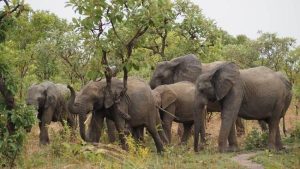The Elephant Protection Initiative (EPI) Friend of the Month for November 2023 is Colonel Dieudonné Yameogo, who is Director of Wildlife in Burkina Faso, which recently became the 23rd member state of the EPI. In this interaction with EPI, Yameogo lists the biggest threats to elephants in his country, adding that an action plan is needed to address the situation

Please tell us how and why you became interested in conservation.
I became interested in conservation whilst studying at the Garoua Wildlife School in Cameroon. I learnt the importance of protected areas, and wildlife in particular, and why we must conserve our natural heritage. Visits to Waza National Park (in Cameroon) and the Nazinga Game Ranch (in Burkina Faso) reinforced my passion for conservation. I’ve given 23 years of my life to this cause.
What is the situation of elephants in Burkina Faso today?
We have elephants in several parts of the country, notably the east, the central southern region, and in the west and the Sahel. We don’t have an up to date census.

What do you think are the biggest threats to Burkina Faso’s elephants, and what solutions are there to these threats?
The biggest threats to our elephants are: Poaching, Ivory trafficking, Human-Elephant conflict, and Destruction of habitat.
To combat these threats, we need a national action plan to conserve elephants, and then we must mobilise sufficient resources to implement such a plan.
What impact has the insecurity in eastern Burkina Faso had on wildlife conservation?
The impact of the insecurity in the east manifests itself in the following ways: An increase in criminal activity against wildlife, and Insufficient surveillance and ecological monitoring, and a lack of on the ground assessments.
Do you remain optimistic that elephants will survive in Burkina Faso?
I am optimistic because there are still important elephant populations in different habitats across the country.
You have a day of leisure in Ouagadougou. How do you choose to spend it?
I like to visit the Nazinga Ranch, which protects an important range of biodiversity.
